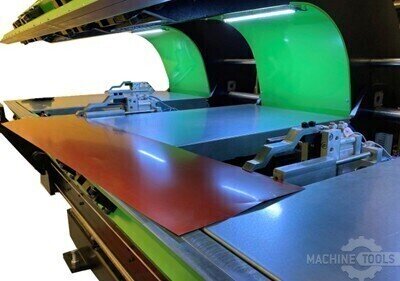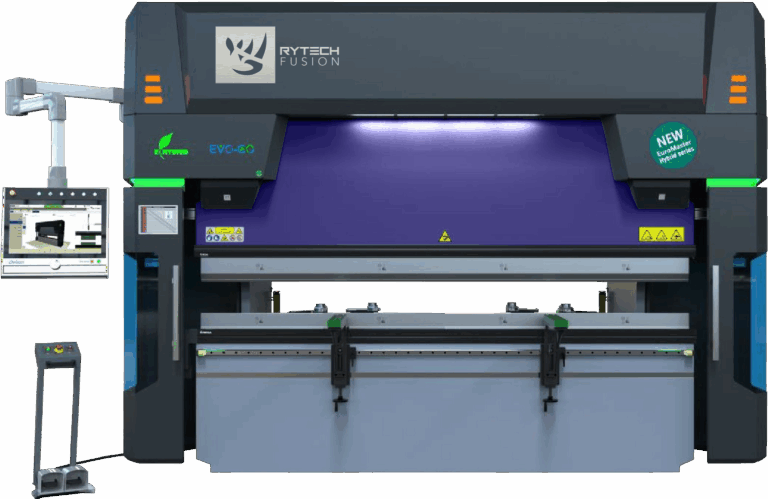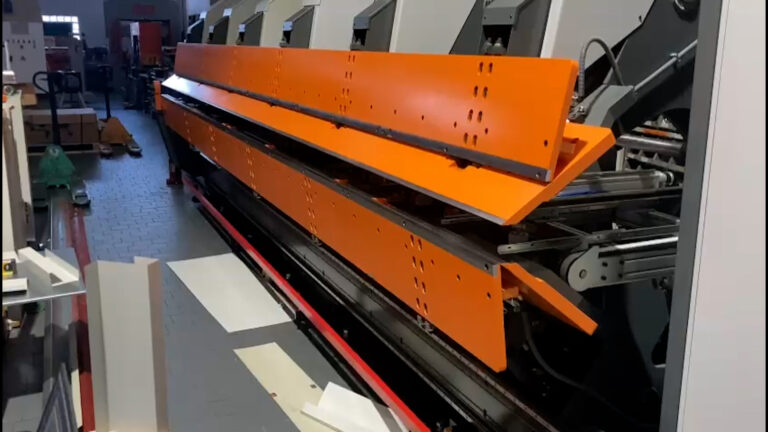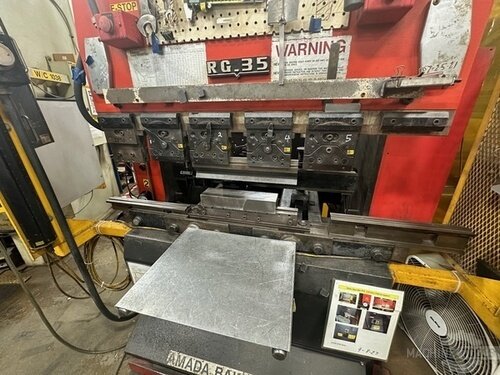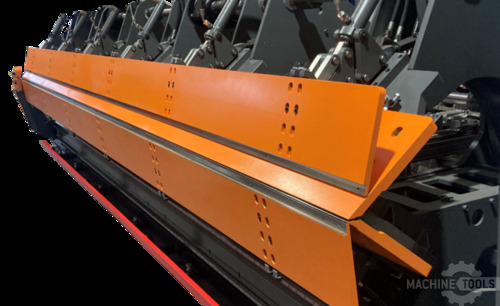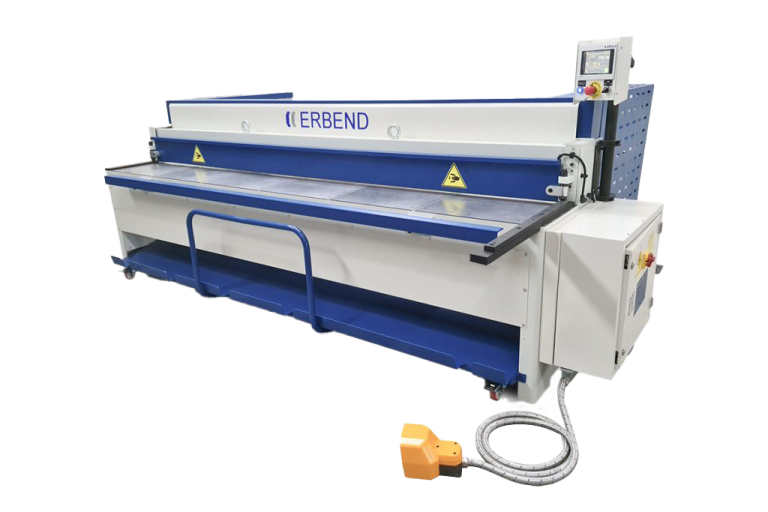From the south side of Chicago to the heart of America’s metal fabrication industry, my journey has always been about helping people solve problems. I’ve spent decades working alongside shop owners and production teams, listening to their challenges and goals—whether it’s getting more out of a slitter line, dialing in a new folder, or simply making life easier for a hardworking crew. At Mac-Tech, my role as Regional Sales Executive lets me bring the right solutions to roofing, siding, and trim shops nationwide. Every day, I see firsthand how the right equipment—chosen and integrated wisely—can transform shop productivity, reduce waste, and deliver real ROI.
Leveraging Decades of Experience to Transform Trim Shop Productivity
Trim shops are under constant pressure to do more with less: shorter lead times, higher quality, and tighter margins. Over the years, I’ve seen that the shops thriving today are the ones that embrace change—not just in materials or labor, but in the very way they approach production. Folding machines, especially when combined with modern coil-fed lines, have become the backbone of this transformation. The best outcomes always come from a customer-first approach: understanding your real bottlenecks, evaluating your current processes, and matching the right technology to your business goals. That’s how we build lasting success.
Understanding Coil-Fed Production: Common Bottlenecks and Opportunities for Improvement
Coil-fed production is the lifeblood of efficient trim fabrication, but it’s not without its pitfalls. Common issues I encounter include:
- Manual handling slowdowns: Too much labor spent moving material between machines
- Setup and changeover times: Inefficient transitions between profiles or thicknesses
- Inconsistent tolerances: Variability leading to rework or scrap
- Limited flexibility: Older machines that can’t keep up with today’s diverse product demands
Each of these is an opportunity for improvement. For example, integrating a high-speed folder with an automated slitter can cut handling time in half, while servo-driven controls allow for faster, more accurate setups. Every bottleneck we identify is a chance to boost throughput and reduce costs.
Evaluating Your Current Slitting, Forming, and Folding Processes: Key Metrics for Efficiency and Waste Reduction
Before recommending any upgrade, I work with customers to assess key metrics across their line. Ask yourself:
- Cycle time per part: Are your folding and slitting operations keeping up with your roll former?
- Material yield: How much scrap is generated per coil run, and why?
- Labor utilization: How many operators are tied up with manual adjustments or handling?
- Downtime and maintenance: Are breakdowns or changeovers eating into your production window?
Using data from your own operation, we can benchmark current performance and identify where a new folder, shear, or automation element will have the biggest impact. Sometimes, simple changes—like adding a powered decoiler or upgrading to a programmable shear—deliver outsized results.
How Advanced Folding Machines Address Specific Fabrication Needs
Today’s folding machines are engineered to solve the exact challenges trim shops face:
- Servo-driven technology: Provides lightning-fast positioning and repeatability, outperforming older hydraulic folders in both speed and accuracy
- Combi-beam and double folder options: Offer unmatched versatility for complex profiles, including hems, offsets, and reverse bends
- Touchscreen programming and memory storage: Enable quick changeovers and error-proof setups, even for less experienced operators
- Integrated safety and automation: Reduce manual intervention, lower injury risk, and free up skilled labor for higher-value work
At Mac-Tech, I help customers compare models from leading manufacturers, weighing factors like bending length, tonnage, tooling flexibility, and integration with existing lines. The right folder can handle everything from standard drip edges to custom panel profiles—all with minimal waste and maximum consistency.
STEFA LCS3
Maximizing ROI: Upgrading Metal Folding Equipment for Speed, Precision, and Versatility
Investing in a new folding machine isn’t just about the sticker price—it’s about the return over years of service. Key ROI drivers include:
- Labor savings: Automation can reduce operator headcount, or let you redeploy skilled workers to other tasks
- Material savings: Tighter tolerances mean fewer rejects and higher yield from each coil
- Faster throughput: With rapid setup and cycle times, you can fulfill more orders with the same footprint
- Future-proofing: Modern folders are adaptable for new products, material thicknesses, and even integration with digital order systems
One customer recently replaced three aging folders with a single high-performance double folder, cutting changeover time by 70% and freeing up floor space for a new roll forming line. The payback period was less than 18 months—proof that smart upgrades pay for themselves.
Real-World Success Stories: Helping Customers Optimize Coil-Fed and Roll Forming Lines
I’ve had the privilege of guiding shops through remarkable transformations:
- Midwest Roofing Supplier: Upgraded from a manual folder and hand-fed slitter to an automated coil-fed line with servo-driven folding. Result: 40% increase in daily output and a 60% reduction in labor hours.
- Southeast Siding Fabricator: Integrated a programmable double folder with their existing roll former. They now produce custom profiles on demand, with less than 2% scrap rate.
- Northeast Commercial Trim Shop: Added a combi-beam folder to handle complex architectural trims, opening up new markets and boosting profit margins.
Each success starts with a conversation—understanding the customer’s goals, constraints, and potential for growth. My role is to bring the right mix of equipment—folders, shears, slitters, decoilers, downspout roll formers, panel benders—and make sure each piece works in harmony.
Steps to a Seamless Transition: Best Practices for Selecting and Integrating New Folding Technology
Upgrading your folding technology doesn’t have to be disruptive. Here’s my approach for a smooth transition:
- Needs Assessment: Review your current and future product mix, production volume, and labor resources.
- Machine Comparison: Evaluate folding options (servo vs. hydraulic, combi-beam vs. double folder, etc.) for your specific requirements.
- Integration Planning: Map out how the new machine will fit into your existing line—consider flow, safety, and automation needs.
- Training and Support: Ensure your team is fully trained on programming, maintenance, and troubleshooting.
- Ongoing Optimization: Monitor key metrics post-installation and fine-tune processes for maximum ROI.
My goal is to be a partner, not just a vendor—providing hands-on support from spec to startup and beyond.
Conclusion: Strategic Investments for Long-Term Efficiency and Profitability
The right folding machine can be a game-changer for trim shops—delivering the speed, flexibility, and quality today’s market demands. By taking a strategic, customer-focused approach, you can maximize productivity, minimize waste, and position your business for long-term growth. Whether you’re looking to add capacity, reduce labor, or diversify your product line, I’m here to help you make the smartest investment for your operation.
Frequently Asked Questions
When is the right time to upgrade a roll former or folder?
If you’re consistently missing delivery deadlines, seeing high scrap rates, or struggling with labor shortages, it’s time to assess your equipment. Upgrading makes sense when the cost of downtime, rework, or lost business exceeds the investment in new technology.
How do servo-driven folders compare to hydraulic systems?
Servo-driven folders offer faster, quieter, and more precise operation, especially for complex or variable profiles. They require less maintenance and deliver tighter tolerances—ideal for shops looking to automate and scale.
What’s the difference between a combi-beam and a double folder?
A combi-beam folder uses interchangeable tooling for maximum profile flexibility, while a double folder bends in both directions without flipping the part, boosting speed and accuracy. The best choice depends on your part complexity and volume.
What are signs a roll forming line is no longer cost-effective?
Frequent breakdowns, excessive scrap, long changeover times, and rising maintenance costs are all red flags. If you’re turning away business due to capacity or quality issues, it’s time to explore an upgrade.
Can new folding machines integrate with existing coil-fed lines?
Absolutely. Modern folders are designed for seamless integration with decoilers, slitters, and roll formers. A thorough site assessment ensures your equipment works as a cohesive, efficient unit.
How can I reduce labor without compromising quality?
Automation is key. Upgrading to programmable folders and automated handling systems lets you maintain or improve quality while reducing manual labor—freeing up your skilled staff for higher-value tasks.
What support does Mac-Tech provide during and after installation?
We’re with you every step: from equipment selection and layout planning to on-site training and ongoing technical support. Your success is our top priority.
Ready to see how the right folding machine can boost your trim shop’s efficiency and ROI? I’d love to walk you through the options, set up a demo, or provide a tailored upgrade quote. Reach out anytime at pat@mac-tech.com or 414-232-7929—or use the form below to get started!
Get Weekly Mac-Tech News & Updates


